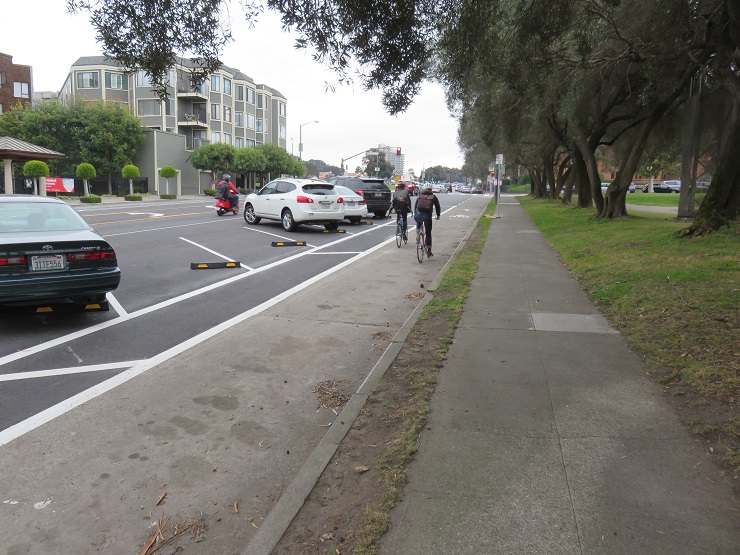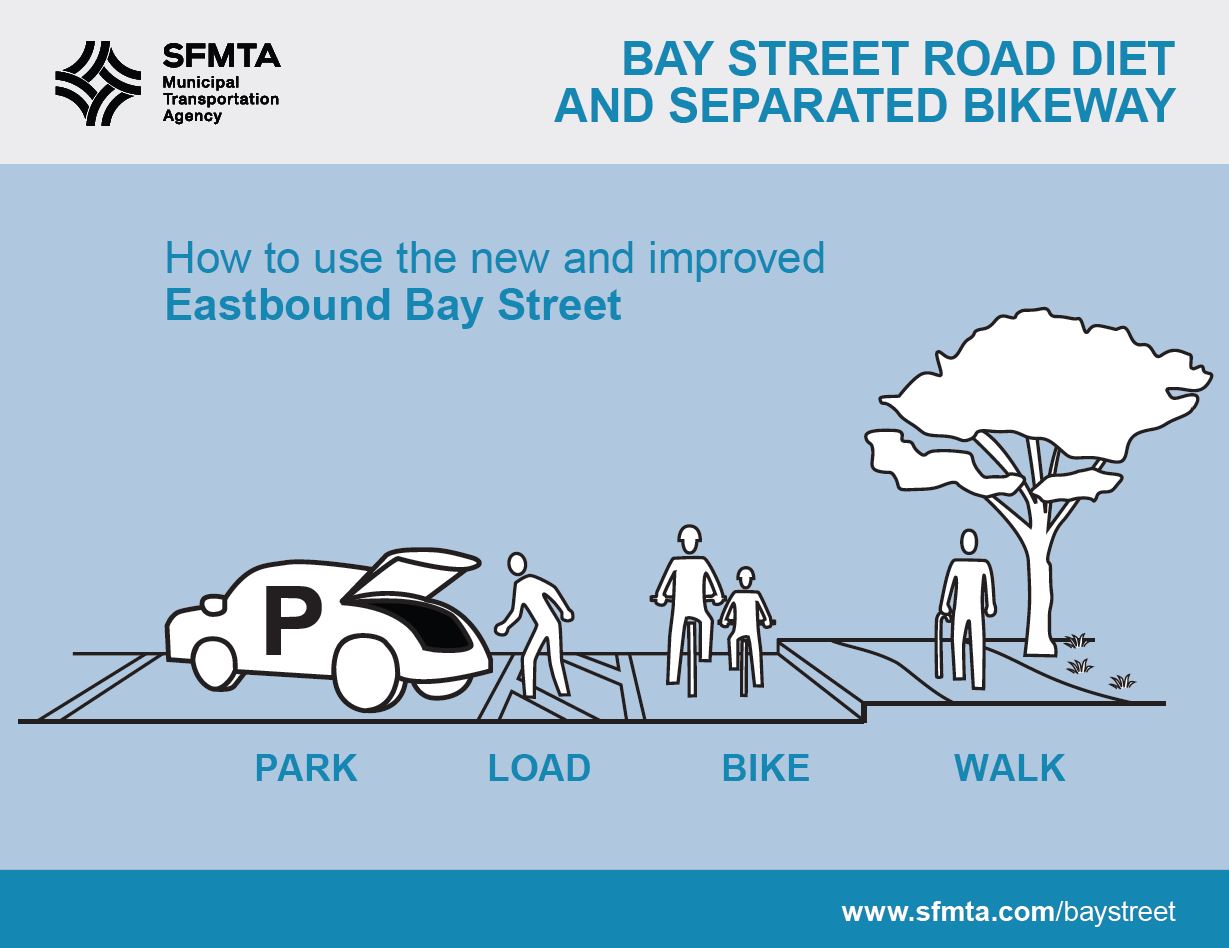If you’ve been on streets like John F. Kennedy Drive in Golden Gate Park or 13th Street in SoMa, you’ve seen that a bike lane doesn’t always have to be on the side of driver’s door.
In the right places (like Bay Street pictured below), a bike lane can run alongside the curb, using parked cars as a form of protection and separation from vehicle traffic. More benefits on parking-protected bike lanes can be found on our blog post about the parking-protected bikeway on 13th Street.

The Bay Street cycletrack is protected with back-in angled parking.
On Bay Street, we recently installed a new configuration of this “parking-protected bike lane” with parking slots that vehicles have to back into, called “back-in angled parking.” It’s part of our Bay Street Road Diet & Cycletrack project.
Back-in angled parking might be new to some, but it’s a standard design used across the United States, from Honolulu to Washington D.C. It’s a safer type of angled parking which allows for people to make better eye contact with oncoming traffic when entering and exiting the parking space.
If you’re confused, back-in angled parking is just like parallel parking, all you have to do is signal, stop and reverse into the parking spot.
The SFMTA installed the first back-in angled parking spaces on Townsend street in 2010. Soon after, we implemented back-in angled parking on a variety of streets including John Muir, Baker between Oak and Fell, and Polk across from City Hall.
Back-in angled has a bevy of benefits, including:
- Improved visibility and increased field of vision — When leaving the parking space, you’ll be better able to see oncoming traffic.
- Decreased number of collisions — Drivers no longer have to back out blindly from their parking space. When used on steep streets, back-in angled parking automatically curbs a driver’s wheels, which reduces the threat of runaway vehicles.
- Improved loading and unloading — Since your car doors don’t open right into traffic, you can load and unload outside of the traveled roadway.
- Increased space — Back-in angled parking doesn’t require as much space to maneuver as traditional angle parking, which may result in an increased number of parking spaces or additional room for sidewalks, bike lanes, etc.
- Traffic calming — Back-in angled parking also helps visually narrow the roadway, which can reduce unsafe speed.
So, if you see more back-in angled parking spaces in the future, don’t break a sweat! They might be “different” by San Francisco standards, but they’re intuitive to use, easy to get the hang of, and safer for everyone.
These handy diagrams posted along Bay Street illustrated to everyone needing to use the street just where they fit in.
